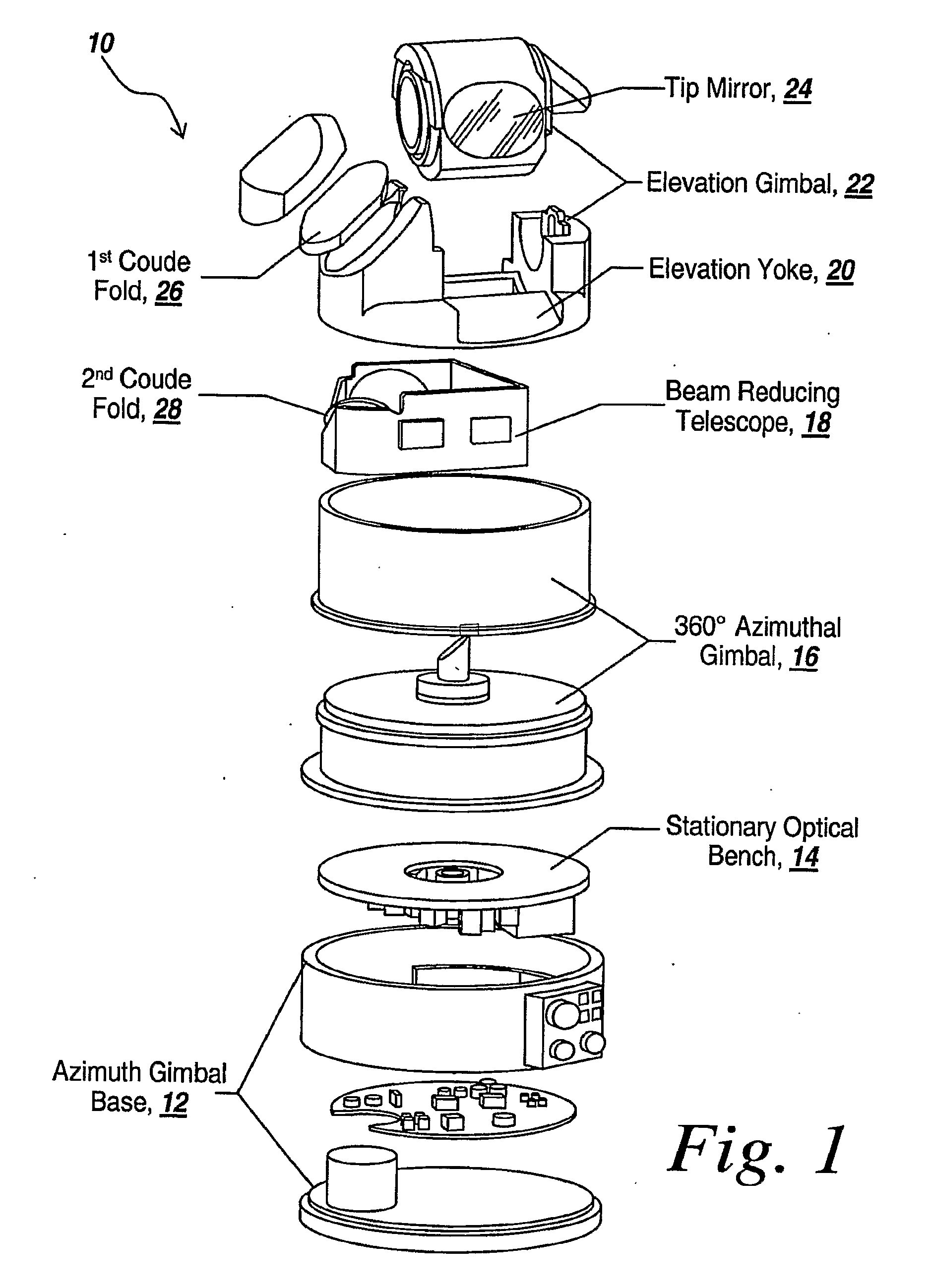High accuracy optical pointing apparatus
a high-accuracy, optical pointing technology, applied in the direction of mountings, telescopes, instruments, etc., can solve the problems of ineffective azimuth gimbals, inability to track them by spinning the azimuth axis, loss of control of a second direction, etc., to achieve optimal two-axis beam pointing control, avoid high acceleration, and eliminate gimbal locks
- Summary
- Abstract
- Description
- Claims
- Application Information
AI Technical Summary
Benefits of technology
Problems solved by technology
Method used
Image
Examples
Embodiment Construction
[0044]Referring to FIG. 1, what is provided by the subject system is a three-axis beam director or receiver that provides hyper-hemispherical coverage, avoids the gimbal lock typical of El-over-Az beam directors and allows unobscured use of the full aperture. The three-axis system comprises a 360-degree azimuthal gimbal 16, a preferably + / −180 degree elevation gimbal 22, and a tip minor 24, located above the El-over-Az combined gimbals. The tip mirror preferably provides ±10-degree tracking perpendicular to the elevation gimbal motion.
[0045]Tip mirror 24 and high-bandwidth elevation gimbal 22 operate as a high speed, 2-axis pointing system. Inside a predetermined cone, preferably a 10-degree half angle cone centered at zenith, they provide all pointing functions. Beyond this cone, the elevation gimbal provides high-bandwidth pointing over its full range, preferably providing pointing over a greater than horizon-to-horizon 220° range in one axis, with the tip mirror providing high ba...
PUM
 Login to View More
Login to View More Abstract
Description
Claims
Application Information
 Login to View More
Login to View More - R&D
- Intellectual Property
- Life Sciences
- Materials
- Tech Scout
- Unparalleled Data Quality
- Higher Quality Content
- 60% Fewer Hallucinations
Browse by: Latest US Patents, China's latest patents, Technical Efficacy Thesaurus, Application Domain, Technology Topic, Popular Technical Reports.
© 2025 PatSnap. All rights reserved.Legal|Privacy policy|Modern Slavery Act Transparency Statement|Sitemap|About US| Contact US: help@patsnap.com



